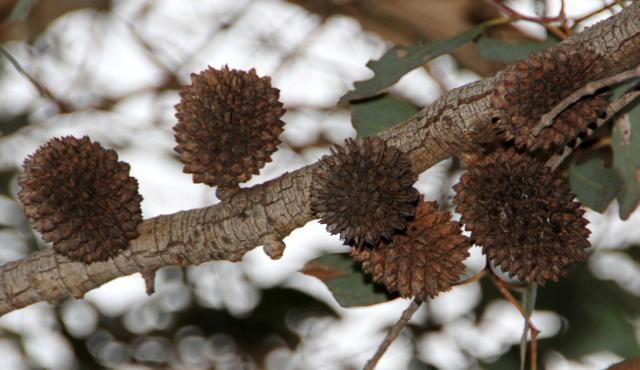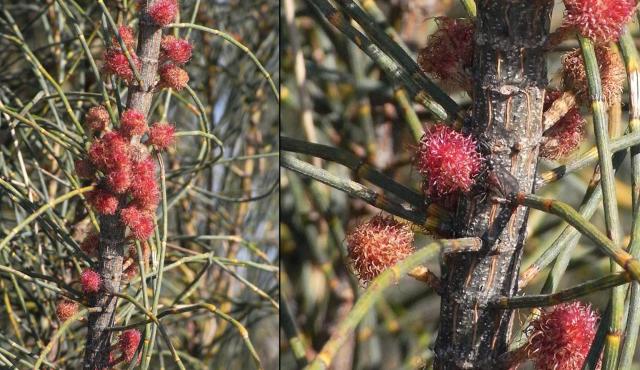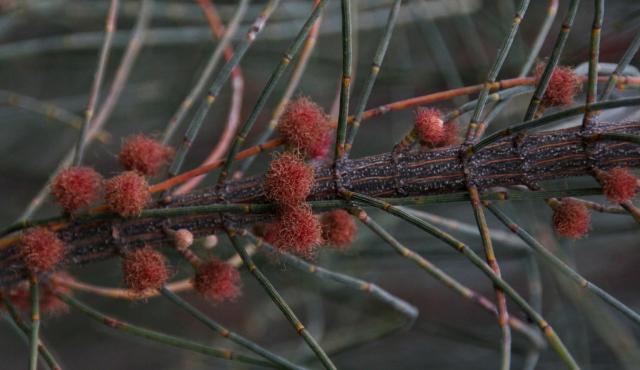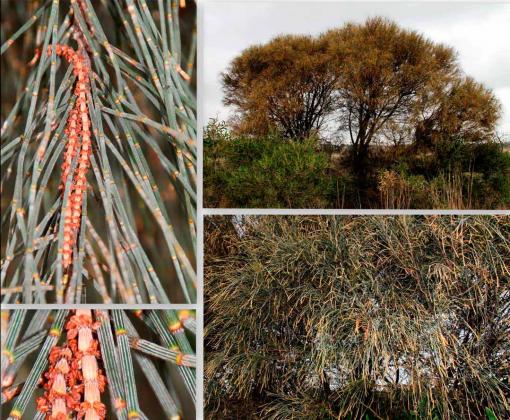A range of teacher professional learning programs will be developed to accompany the Biodiversity of the Western Volcanic Plains online outreach...




Drooping Sheoak
Allocasuarina verticillata
Separate male and female plants, pollinated by the wind. The male plant produces masses of pollen. Female flowers are designed to hang from the tree enabling them to catch the pollen. Nitrogen-fixing plant living symbiotically with mycorrhizal fungi. This enables the plant to fix nitrogen and absorb nutrients provided by the fungi which is attached to the root system.
| Details | Description |
| Type | Tree |
| Group | Sheoak |
| Former Scientific Name | Casuarina stricta |
| Identifying Characteristics | |
| Distinctive Features | Pendulous foliage |
| Life Form Group | Tree |
| Life Form Codes | Understorey Tree or Large Shrub (T) |
| EVC types | EVC 175: Grassy Woodland EVC 55_63: Higher Rainfall Plains Grassy Woodland EVC 649: Stony Knoll Shrubland |
| Native Status | Native to Australia |
| Taxonomy | |
| Phylum | Charophyta |
| Class | Equisetopsida |
| Order | Fabales |
| Family | Casuarinaceae |
| Genus | Allocasuarina |
| Species | verticillata |

Distribution maps indicate current and historic locations where species have been sighted.
Source: Atlas of Living Australia
| Endangered Status | |
| DEPI Advisory List | Not listed |
| FFG Act | Not listed |
| EPBC Act | Not listed |
The conservation status of species is listed within Victoria and Australia.
The Department of Environment and Primary Industry (DEPI) Advisory List consists of non-statutory advisory lists of rare or threatened flora and fauna within Victoria.
The Flora and Fauna Guarantee Act 1988 (FFG Act) lists threatened species in Victoria. Under the Act, an Action Statement is produced for each listed species.
The Environment Protection and Biodiversity Conservation Act 1999 (EPBC Act) is the Australian Government’s key piece of environmental legislation, listing nationally threatened native species and ecological communities.



